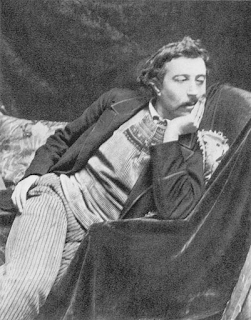Eugène
Henri Paul Gauguin was famous for his unique style of use of colors and
synthetist, as the leading French Post-Impressionist artist
his paintings were not appreciated by people until after his death. He is a
very important figure for modern art. He was disappointed by the poor color use
style for the traditional European painting. By contrast, the art of Africa and
Asia seemed to him full of mystic symbolism and vigour. Under the influence of
the cloisonnist style, paved
the way to Primitivist and the return to the pastoral.
By experimenting with colors and objects his later on paintings more evolved
towards the Synthetist style. As art forms he is famous for using wood
engraving and woodcuts.
Eugène
Henri Paul Gauguin was born on 7 June, 1848, Paris, France, the son of Clovis Gauguin,
a Republican editor, and his wife Aline Marie Chazal. In 1849, after Louis
Napoléon came to power, Paul Gauguin followed his family emigrated to Peru and
his father died on the way. Paul Gauguin together with his mother and sister
stayed in Lima with their rich relatives and did not return to France until
1855. In 1865, Paul became a sailor and made a voyage around the world. In
1868, Paul started to work as a broker’s agent in Paris. And his first knowing
drawing dated 1871, when he was in his late twenties. In the broker’s agency
Gauguin met and befriended Claude-Emile Schuffenecker (1851-1934), who shared
the similar interests on drawing and later on studied painting together at the
Colarossi Academy. Gauguin married a Dane, Mette Sophie Gad (1850-1920), in
1873, which gave birth to his 5 children.
His
marriage failed after 11 years due to his failure in business and the truth
that he became a full time painter. Gauguin had a very special view of modernization and
civilization. In order to escape from the European civilization and
"everything that is artificial and conventional" Gauguin sailed to French Polynesia in 1891
and in Tahiti, under the influence of native life, he painted most of his later
on famous paintings. And he had always been in trouble because of against
French government’s ruling on the native people in Polynesia. His body had been
weakened by alcohol and a dissipated life. He died for an uncured injury in
1903 when he was 54 years old.
The Yellow Christ (1889)
I
came across his paintings when I was reading an art magazine. I was
immediately attracted by his unique painting style, which is bond lines
combined with bright colors. Also I was attracted by the cultural content
inside his paintings. The Yellow Chris (1889), as one of Gauguin’s most
famous quintessential Cloisonnist works, showed Gauguin’s early "synthetist" style of the using of flat planes,
intense colors, and bold circumscribing outlines. He paid little attention to classical
perspective and boldly eliminated subtle gradations of color, thereby dispensing
with the two most characteristic principles of post- Renaissance painting (Deskjet,
2007). I find it’s fascinating to see how he interacts the sky
with the mountains and create the depth feeling in back and using simple lines
on drawing Christ and women in front. The division of each single part works
together very well. I like this painting because the depth feeling of
background and the simple curve lines of the women, together the whole feeling
of this painting is bright, simple and deep.
Inspired by
Tahiti’s unspoiled culture Gauguin traveled to Tahiti in 1891. For him Tahiti
is a tropical paradise. Parau na te Varua ino (Words of the Devil), 1892 is one
of his very first works focused on the life of the native people in Tahiti. The
pose of the standing nude, for instance, is derived from a medieval statue of
the biblical Eve and more distantly from the Venus Pudica of classical
sculpture (National gallery of art, 2003). I am very attracted by this art
from. The clear and simple curve lines, the rich color, even more the whole
feeling of this painting is heavy and mysterious. It somehow echoed to it’s
cultural content of this painting: traditional conservative Tahitian thoughts
vs. openness nude young woman body. It contains the references to original sin,
the loss of virginity, and occidental standards of beauty. The aesthetic within the painting itself is
very authentic and unique which is bare seen in early European’s art works.
Same as the
last piece, this work is again Set in a Tahitian landscape by the sea, and the work
divided into three parts. Obviously top center and lower. At the top, Tihitian
people were performing a ritual near a towering sculpture. Like many figures in
Gauguin’s Tahitian works, the monumental sculpture was derived not from local
religion but from photographs of carved reliefs adorning the Buddhist temple
complex at Borobudur (Java). In the middle part, three Tahitian women’s
position made a stable triangle that created a great visual feeling of stabilization.
They are placed against a field of pink earth in poses that may signify birth,
life, and death.(Java) The lower is the
part that shows Gauguin’s Post-ImpressionisT style. There is not much about specific objects but using rich colors and curves create
illusions unusual image to represent the complexity of human and religion.
References:
Deskjet. 2007. “Gauguin Art: The Yellow Christ.” Gauguin Art. http://gauguin-art.blogspot.com/2007/09/yellow-christ.html.
“Fatata te Miti (By the Sea).” 2013. The Collection. http://www.nga.gov/collection/gallery/gg82/gg82-46624.html.
“Impressionist and Post- Impressionist Artists.” 2013. Art Institute Of Chicago.
Philip Vickers,
"Martinique in Gauguin's Footsteps", Contemporary Review, 1
June 1997.




No comments:
Post a Comment